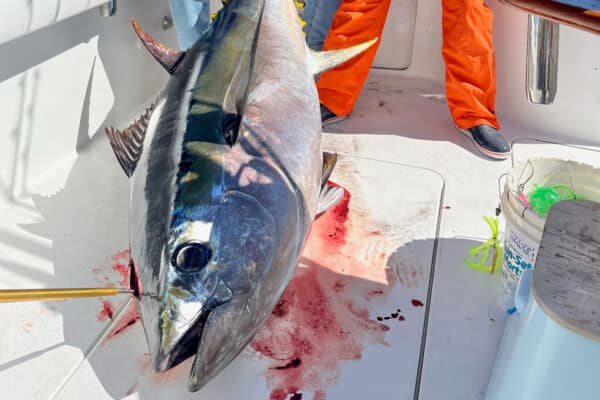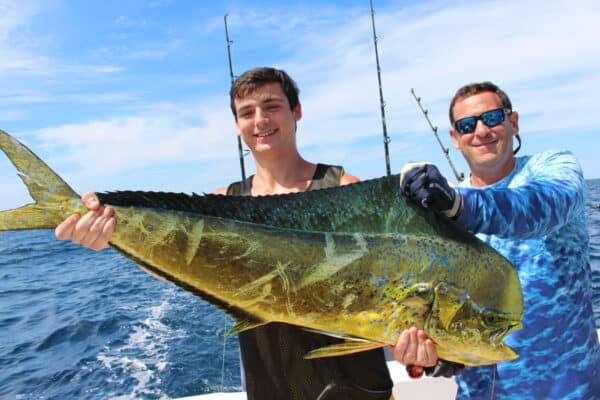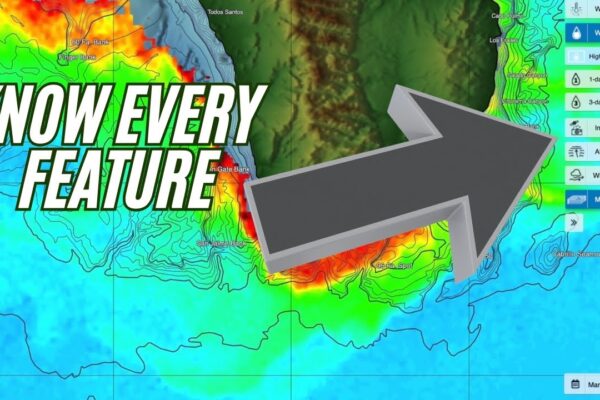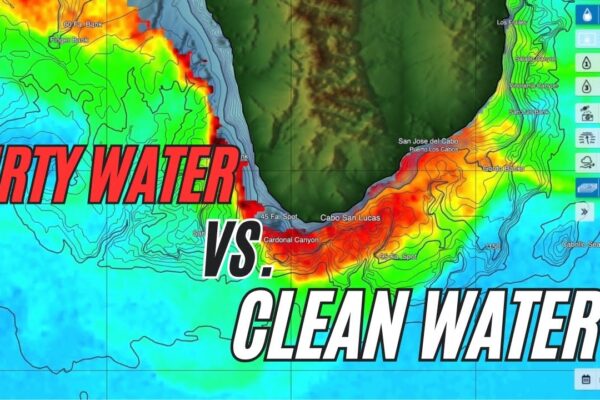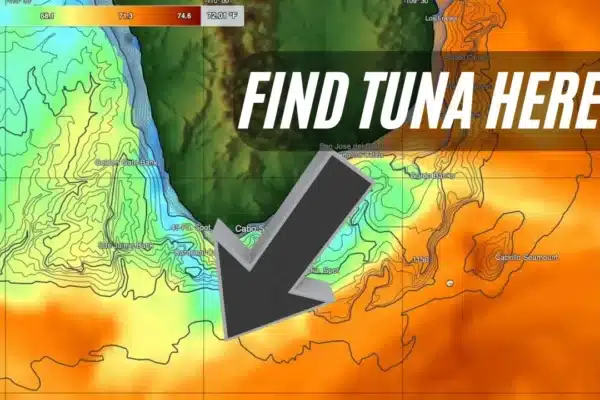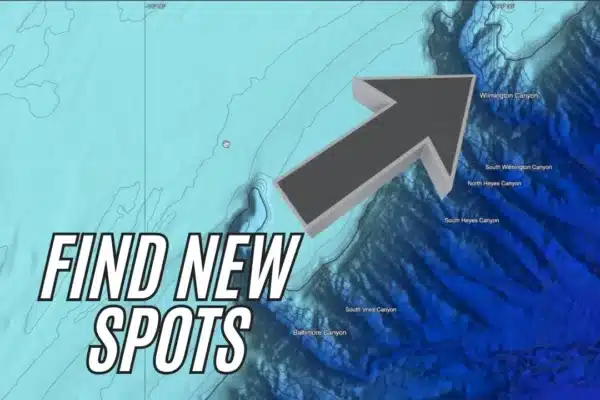
The definition of “peak anticipation” is the excited squawking of shearwaters and terns as they dip and dive above the water’s surface, where below lurks one of the fastest, sleekest predators in the ocean. Watching the birds get closer as the squawking gets louder, followed by human exclamations of excitement as a frothing explosion erupts in the water ahead. The crew is glancing from the birds to the sonar in hopes of a tell-tale return. Red marks appear, and you turn to face the spread of scantily skirted ballyhoo running way back behind the white water churned up by quad 300 outboards at 7 knots. BOOM! Clips pop, tips are jerked down, and the air is filled with the roar of multiple Shimano Tiagras dumping mono with the clickers still on. The crew can barely hear each other over the cacophony of drags screaming and the shouts of joy as tuna and bait connect in this ballet between anglers and fish. This is why we tuna fish the other side of the Gulf Stream in Central Florida.
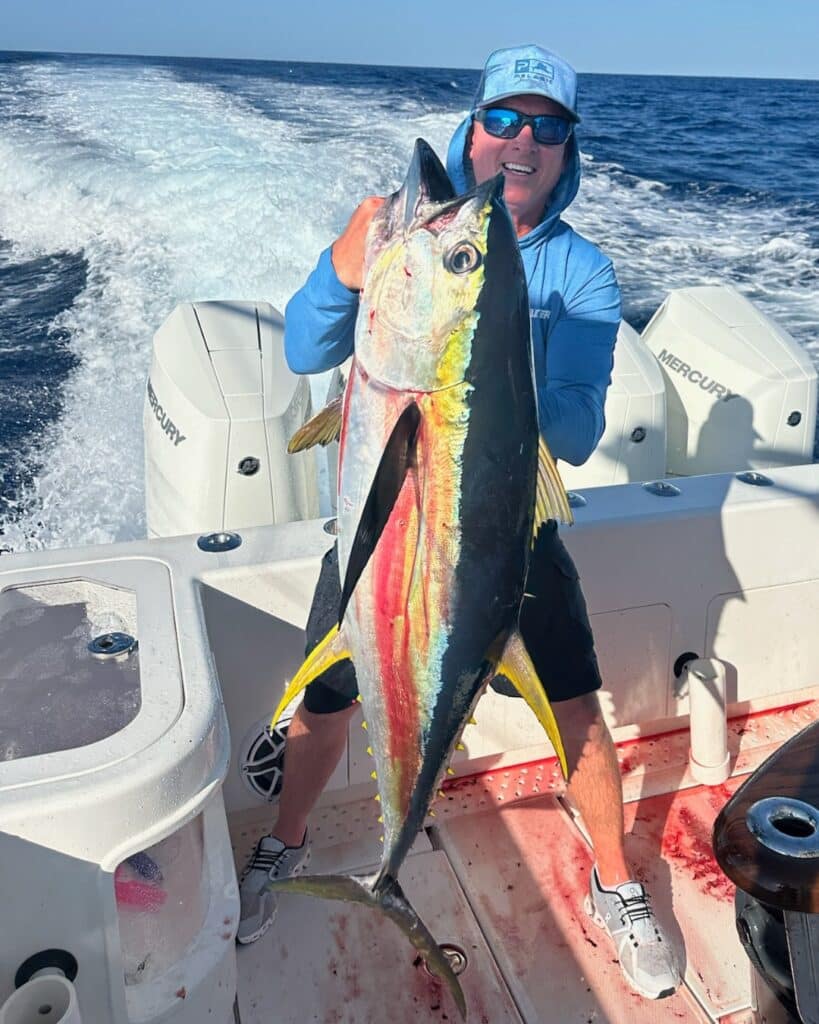
It is so exciting when tuna fishing is going well that it helps one endure the long runs, the skittish packs of birds, and the sounding of tuna as the boat draws near where moments ago yellowfin were feeding with abandon. It can wear you down for sure, but each bird pack is different, and one of them may make the day so we fish hard, roll the dice, and hope to hit pay dirt!
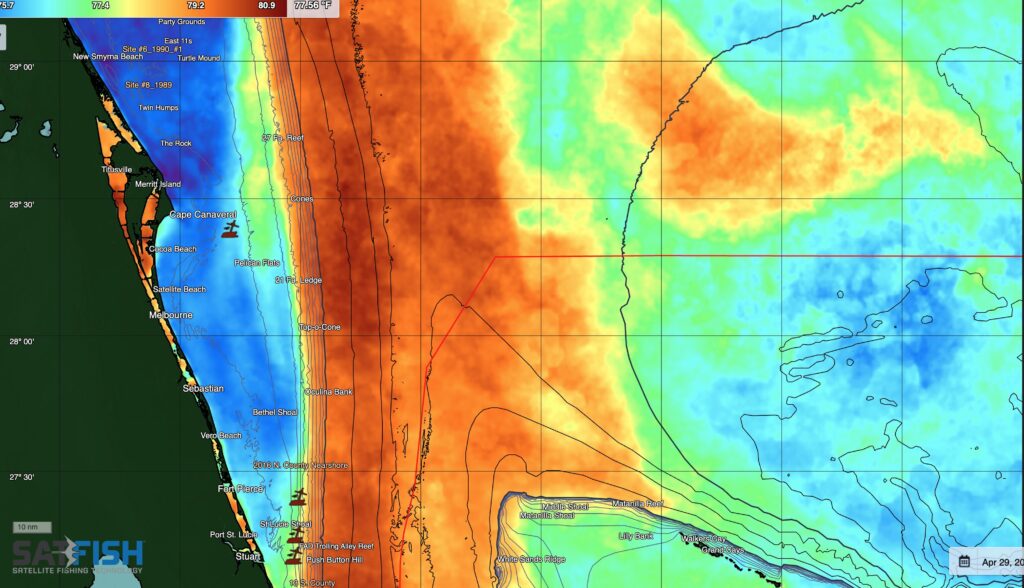
Hopefully, this flowery description will help give insight into a uniquely random fishery that exists off the east coast of Florida from St. Augustine to Vero Beach. The Gulf Stream is a river of warm water flowing northward at varying distances to land. By running across the stream, tuna anglers search the eastern edges where the current breaks and cooler water provides food and travel lanes for yellowfin tuna in the 20-to-100-pound class. Most Central Florida anglers have had to evolve from pulling lures in the “old days” to ballyhoo offered with a full stealth presentation. Sub-surface lures are often pulled on the flat lines while ballyhoo adorned with a sea witch or Ilander lure are trolled way back. Somehow, the tuna have learned to shy away from heavier leaders, so 80# fluoro is where most anglers start, while some flirt with #60, but that can be risky.
Tuna fishing is equivalent to bird chasing. Using powerful radars to mark the bird packs is the key to our fishery. It is a run-and-gun process, and the amount of water covered in a day is incredible. Marking birds out to 6 miles or more takes calm weather and a trained eye, but it is the key to finding tuna. Sometimes a single frigate will mark and can make the day. Many times, the packs dissipate as the fish dive at the sound of the boat. Stealth is paramount, and each pack acts differently from the last, but it may only take one that’s chewing to make the day.
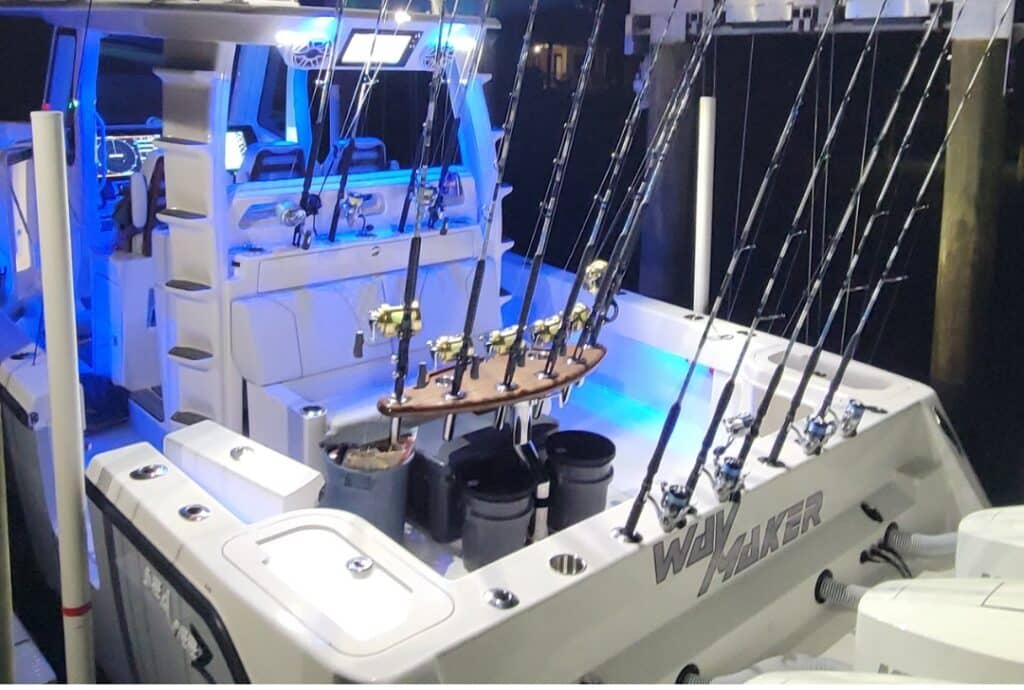
Knowing where to look is just as important, and that’s where we rely on SST charts like SatFish to give us the “lay of the land” and a place to start. Earlier in the year, we often find the tuna are still in the warmer water in or adjacent to the Gulf Stream, which is the hottest water around. But later in the season, the stream is too hot and the tuna tend to feed and travel in the slightly cooler water east of the stream.
Our first trip of this season found us departing New Smyrna aboard the WayMaker, a brand new 42’ Seavee owned by the Hunt family. We pulled away early and found ourselves 70 miles offshore as the sun glowed brightly below the horizon. We began our search and found several early morning packs, but we did not strike gold till a pack gave us four tuna about 10 am. We continued to cover ground, zig-zagging but generally heading east. The afternoon stretched long as packs were either elusive or fleeting upon our arrival. We turned back west at 128 miles and continued the hunt, more thankful than ever for the four yellowfin on ice. But as tuna fishing proves often, the next pack may be the one. Back at 80 miles from home, we found a very active pack that also had frigate birds in tow. We witnessed several tuna explode on flying fish and even had a NatGeo moment as a frigate caught a flying fish in the air as it fled from a tuna. Cue the red marks, then cue the screaming reels! Two hours later, we added nine more tuna to the box and 3 dolphin. Still a long way to run, we iced down and made our way home, reveling in the highs and lows of tuna fishing. It’s certainly better to end on a high!
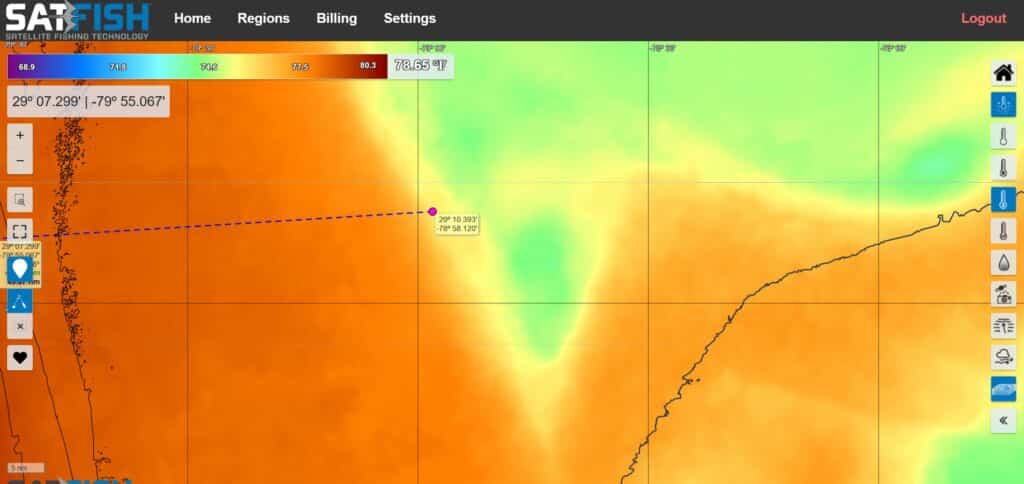
In hindsight, we learned that the tuna were holding just out of the 79-degree water of the stream, but staying in the 77-to-78-degree band of water before the 76-degree area. SatFish had mapped out this band, and now, for some period of time, we will know to focus our initial efforts here until the water heats up and the pattern changes. Our tuna fishing is very random compared to other types of fishing but patterns do emerge and SST charts play a huge part in figuring them out.

